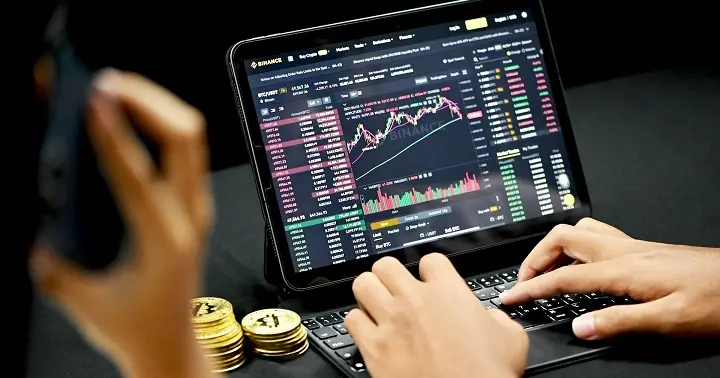Understanding Market Makers: Predators in the Gray Area, Why They Are Crucial to the Crypto World?
Original Title: Market Making: Predatory or Essential?
Original Author: Min Jung
Original Compilation: Deep Tide TechFlow
Article Summary
Market makers contribute significantly to reducing volatility and trading costs by providing ample liquidity, ensuring efficient trade execution, enhancing investor confidence, and facilitating smoother market operations.
Market makers utilize various structures to provide liquidity, the most common being token loan agreements and retention models. In token loan agreements, market makers borrow tokens from project teams to ensure market liquidity for a specific period (usually 1-2 years) and are compensated with call options. On the other hand, the retention model involves market makers being compensated for maintaining liquidity over the long term, typically through monthly fees.
As in traditional markets, clear rules and regulations governing market maker activities play a crucial role in the proper functioning of the cryptocurrency market. The cryptocurrency market is still in its early stages and urgently needs reasonable regulations to prevent illegal activities and ensure fair competition. These regulations will greatly help promote market liquidity and protect investors.

Which market do you want to trade in?
Source: Presto Research
Recent events in the cryptocurrency market have sparked significant interest in the concept of market making and market makers. However, market makers are often misunderstood and seen as opportunities for price manipulation, including the notorious pump-and-dump schemes, and accurate information about the true role of market makers in financial markets is scarce. Emerging projects often overlook the significance of market makers as their tokens approach listing and frequently question the necessity of market makers. In this context, this article aims to explain what market makers are, their importance, and their functions in the cryptocurrency market.
What are Market Makers?
Market makers play a crucial role in maintaining continuous market liquidity. They typically achieve this by simultaneously providing buy and sell quotes. By buying from sellers and selling to buyers, they create an environment where market participants can trade at any time.
This can be likened to the role of a used car dealer in our daily lives. Just as these dealers allow us to sell our current vehicle and buy a used car at any time, market makers perform a similar function within financial markets. The global market maker Citadel provides the following definition of market makers:

Figure 2: The role of market makers defined in traditional financial markets
Source: Presto Research
Market makers are also essential in traditional financial markets. On NASDAQ, there are an average of about 14 market makers for each stock, totaling around 260 market makers. Additionally, in markets with less liquidity than stocks, such as bonds, commodities, and foreign exchange, most trades are conducted through market makers.
Market Maker Profits and Risks
Market makers earn profits through the bid-ask spread of financial instruments. Since the selling price is higher than the buying price, market makers profit by buying financial instruments at a lower price and selling the same instruments at a higher price (i.e., the bid-ask spread).

Figure 3: Bid-ask spread
Consider a scenario where a market maker simultaneously quotes a buy price of $27,499 and a sell price of $27,501 for an asset. If these orders are executed, the market maker buys the asset at $27,499 and sells it at $27,501, earning a profit of $2 ($27,501 - $27,499), which represents the bid-ask spread.
This concept aligns with the earlier example of used car dealers, where dealers buy a used car and then sell it at a slightly higher price, profiting from the difference between the buying and selling prices.
However, it is important to note that not all market-making activities generate profits; market makers can indeed incur losses. In rapidly fluctuating markets, the price of a specific asset may swing sharply in one direction, resulting in only the buy price or sell price being executed, rather than both occurring simultaneously. Market makers also face inventory risk, which is the risk associated with being unable to sell an asset. This risk exists because market makers always hold a portion of their market-making assets to provide liquidity.
For example, in a scenario where a used car dealer buys a car but cannot find a buyer, coupled with an economic downturn that causes used car prices to drop, the dealer would incur a financial loss.
Why Do We Need Market Making?
Providing Ample Liquidity
The primary goal of market making is to ensure that the market has sufficient liquidity. Liquidity refers to the degree to which an asset can be quickly and easily converted into cash without incurring financial loss. High market liquidity reduces the impact of trading costs on any specific transaction, minimizes losses, and allows for the effective execution of large orders without causing significant price fluctuations. Essentially, market makers facilitate investors in buying and selling tokens more quickly, in larger quantities, and more easily at any given time without causing major disruptions.

Figure 4: Why liquidity is important
Source: Presto Research
For example, if an investor needs to buy 40 tokens immediately, in a highly liquid market (Order Book A), they can purchase 40 tokens at a unit price of $100 right away. However, in a less liquid market (Order Book B), they have two options: 1) buy 10 tokens at $101.2, 5 tokens at $102.6, 10 tokens at $103.1, and 15 tokens at $105.2, averaging a price of $103.35, or 2) wait for a longer time for the tokens to reach the desired price.
Reducing Volatility
As illustrated in the previous example, the ample liquidity provided by market makers helps mitigate price volatility. In the aforementioned scenario, after the investor just purchased 40 tokens, the next available price in Order Book B is $105.2. This indicates that a single transaction caused approximately a 5% price fluctuation. In the real-world cryptocurrency market, even small trades can trigger significant price changes for assets with low liquidity. This is especially true during periods of market volatility, where fewer participants can lead to significant price swings. Therefore, market makers play a key role in reducing price volatility by bridging this supply-demand gap.

Figure 5: How market makers help reduce volatility
Source: Presto Research
The roles of market makers ultimately help enhance investor confidence in projects. Every investor wants to be able to buy and sell their held assets with minimal trading costs as needed. However, if investors perceive that the bid-ask spread is large or that it takes a considerable amount of time to execute the desired quantity of trades, they may feel discouraged despite having a positive view of the project. Therefore, if market makers remain active in the market, providing liquidity, it not only lowers the entry barrier for investors but also incentivizes them to invest. This, in turn, brings more liquidity, creating a virtuous cycle and fostering an environment where investors can trade with confidence.
Crypto Projects ↔ Market Makers
Although there are various contractual structures between market makers and projects in the cryptocurrency market, including token loans + prepaid contract structures, the most widely used contract structure (token lending + call options) works as follows:

Figure 6: Project <-> Market Maker Structure
Source: Presto Research
Project → Market Maker
Market makers borrow the tokens needed for market making from the project team. During the early stages of a token's listing, the limited number of tokens available in the market often leads to high demand. To offset this imbalance, market makers borrow tokens from the project team, typically for an average term of 1-2 years (equivalent to the duration of the market-making contract), to ensure market liquidity.
In return for their market-making services, market makers receive the right to exercise call options at the expiration of the loan. This call option grants them the right to purchase tokens at a predetermined price. Since the project's cash resources are limited, they do not rely on fiat currency but instead provide call options as compensation. Additionally, the value of the call option is directly related to the price of the token, providing market makers with protection against early high-dump schemes.
Market Maker → Project
- During the contract period of borrowing tokens, market makers negotiate with the project team to provide services that ensure maximum spreads and ample liquidity. This arrangement is beneficial for trading in a well-liquid environment.
In summary, market makers borrow tokens from projects, obtain call options, and provide services aimed at ensuring liquidity within a specific spread during the borrowing period. However, it is important to note that legitimate market makers do not make any promises regarding price.
Insufficient Regulation of Market Makers in the Cryptocurrency Market
The negative perception of market makers in the cryptocurrency market largely stems from the lack of regulation compared to traditional financial markets. In U.S. stock markets like NASDAQ and the New York Stock Exchange, market makers must maintain a buy and sell price of at least 100 shares, and they are obligated to fulfill orders if corresponding orders arise (see Figure 7). There are also very specific requirements for market makers, such as only placing orders within a certain range (e.g., large-cap stocks within an 8% or 30% range). These measures prevent market makers from placing orders at absurd prices (far from the highest bid/lowest ask) and only placing corresponding orders when there is a profit opportunity.

Figure 7: NYSE Rules on Market Making
Source: Presto Research
However, as previously mentioned, market making in the cryptocurrency market remains under-regulated in comparison. Unlike traditional financial markets, there is no separate license or regulatory body overseeing these operations.
As a result, news reports frequently highlight companies illegally profiting under the guise of "market making." The biggest issue is that while traditional exchanges like NASDAQ enforce strict penalties and regulations against illegal market-making activities, the decentralized cryptocurrency market lacks substantial penalties for deceptive market-making practices. This clearly exposes the significant lack of regulatory oversight, highlighting the need for regulatory measures in the cryptocurrency market that are on par with those in traditional financial markets.
Conclusion
Despite regulatory shortcomings allowing for gray areas in crypto market making, market makers will continue to play a key role in the market. Their function of buying financial instruments from sellers and selling them to buyers to provide liquidity remains fundamental. Especially in the illiquid cryptocurrency market, market makers help reduce trading costs and volatility, creating an environment where investors can trade with greater confidence. Therefore, by incorporating market makers into the system and promoting fair competition and sound market-making practices, we can anticipate an environment where investors can trade with more assurance.









